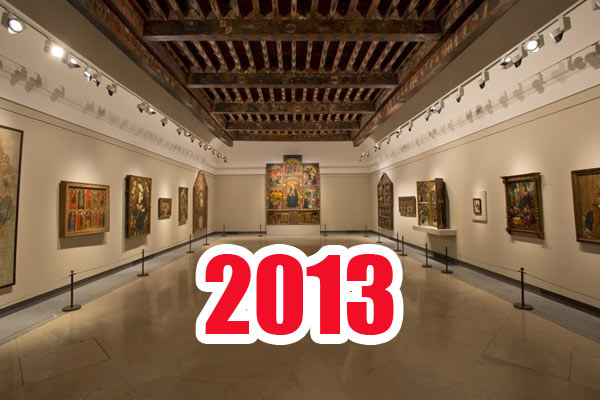

The front and back of Vasari’s “Last Supper” after completion of the structural conservation work. The five panels that comprise the painting have been rejoined and provided with a stable system of wooden cross pieces. Work can now begin on the final conservation of the painted surface. © Opificio delle Pietre Dure e Laboratori di Restauro
Giorgio Vasari’s ‘Last Supper’ reemerges after 50 years Vasari’s ‘Last Supper’ has not been seen by the public since it was damaged in 1966 and separated into five pieces. Now the five panels are joined together again as the result of a partnership between the Opificio delle Pietre Dure e Laboratori di Restauro in Florence and the Getty Foundation in Los Angeles.]]>
December 24, 2013, source: Getty Museum
Nearly five decades ago, thousands of works of art—from frescoes and sculptures to manuscripts and paintings on wood panel—were damaged or destroyed by a momentous flood in Florence, Italy. One of the most severely damaged works of art to survive was Vasari’s Last Supper, a large-scale panel painting (more than 8 by 21 feet) comprising five major panels, commissioned in 1546 by the nuns of the Florentine Murate Convent.
During the flood, the painting was completely immersed in water for about 12 hours, and the lower portion of the work was under water for an even longer duration. Immediately afterwards, to aid in drying, the sodden panels of the painting were separated and an emergency paper treatment applied to the paint surface to prevent the paint from simply peeling away from its saturated wooden structure. Due to the enormous complexity of these conservation challenges, the artwork has been in storage since 1966, with conservators waiting and hoping for the future expertise to resurrect it. That time has finally arrived.
As part of the Getty’s Panel Paintings Initiative, the Getty Foundation provided a major grant to the OPD in Florence to conserve the important work and to train seven conservators at the advanced, mid-level and post-graduate levels side-by-side with two leaders in the conservation field, Ciro Castelli and Mauro Parri.
“The Opificio delle Pietre Dure e Laboratori di Restauro has a long history in the conservation of panel paintings, as well as a long relationship with the Getty,” said Marco Ciatti, superintendent of the OPD, one of the world’s most prestigious art conservation and restoration laboratories. “The Vasari painting was the last major work damaged in the Florence flood to undergo treatment, and the conservation challenges were so complex that we only recently had the technology to begin treatment. When you consider the condition of the panels when treatment started, the current state of the ‘Last Supper’ —visible again as a single, monumental artwork—is truly miraculous.“
Related content
The J. Paul Getty Museum presents “The Poetry of Paper” (exhibition, 2013)
Follow us on:


